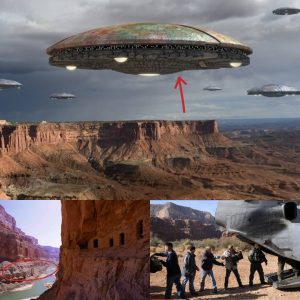The Czech Institute of Egyptology has announced an amazing discovery, that was made during their ongoing work near a pyramid in the deserts of Egypt. They have unearthed the impressive tomb complex of Kaires, a priest and official who was once one of the most powerful in Ancient Egypt. It is hoped the find will allow researchers to understand the life of this fascinating individual and also provide insights into the Old Kingdom in Pharaonic Egypt.

Abusir Pyramid Archaeology Field
The archaeologists who made the discovery are based in the world-renowned University of Charles in Prague in the Czech Republic. The Czech Institute of Egyptology is the sole such institute in that country. It was granted a concession near the Abusir Pyramid Field and its archaeologists only began excavating the site in recent weeks in cooperation with Egyptian officials from the Ministry of Antiquities.
Experts made the find near the pyramid of Abusir, which dates from the 5 th dynasty (2500-2400 BC). This pyramid, which was never finished, is adjacent to two extensive necropolises and the identity of its builder is not known. It dates from the Old Kingdom a time which Egyptologists know very little about. The Czech team were only working at the site, two weeks, when they made their remarkable discovery.

The Tomb Complex of Kaires
Archaeologists have unearthed the ‘unique burial complex of the royal confidant and priest Kaires’ according to the statement of the Czech Institute of Egyptology . It was found in the heart of the Abusir archaeological site, a place reserved for the royal family and members of the Egyptian elite. The complex is large, and it covers an area some 500 sq meters (5382 sq ft).
The burial complex contains a tomb and also a series of other rooms. In the tomb room there is a limestone coffin and a partially preserved statue of Kaires, “which has been somewhat miraculously preserved in its original location,” according to the Czech Institute of Egyptology report. It even still has some paint on it. The statue is complete with an inscription giving some details of his many titles.

There is also a unique room that held a cult chapel which is a magnificent example of Old Kingdom architecture. The complex is made from blocks of basalt and this indicates the high status of Kaires. Sadly, it seems that the tomb and its grave goods was looted by grave robbers many centuries ago.
Who Was Kaires?
Kaires was a very powerful official and his statue can be compared to that of a Prime Minister or Vizier. Based on inscriptions from the tomb, Czech Institute of Egyptology (CIE) reports he was the ‘sole friend’ of the Pharaoh. This meant that, he was also among other things the administrator of the king’s building projects, manager of the royal palace, overseer of the priests in the pyramid complexes and also was a priest of Hathor.

The inscription has also been read to state that Kaires was:
“keeper of the secret of the Morning House, steward of the royal palace, foremost of the House of Life, inspector of the priests serving in the pyramid complexes of kings Sahure and Neferirkare, priest of the goddess Hathor, mistress of the sycamore, in Cusae (a city in southern Egypt), custodian of the two thrones (i.e. of southern and northern Egypt), as well as a holder of several other titles.”
This house was where the Pharaoh breakfasted and bathed and, as steward, Kaires had unparalleled access to the king. Another one of his many important roles was that he was ‘foremost of the House of Life’ reports the Czech Institute of Egyptology . This was one of the Old Kingdom’s most important institutions and it was the repository of all the vast store of Egyptian history, religious lore and philosophy.
Knowledge From the Tomb
This tomb has provided the experts with many new insights on the 5 th dynasty era. The discovery of the statue of Kaires in the tomb was dramatic as it proved that, in the Old Kingdom at least, they placed statues of the dead in tombs. Preliminary examinations of the tomb are allowing the team of experts to understand how such an impressive complex was built. A large pit was first dug, and the sarcophagus place in it and the hole was lined with blocks and it was all sealed by massive slabs that weigh up to 9 tons (8100 kgs).

The excavations are still ongoing and the information from the tomb will be further analyzed, in the coming months. The tomb is proving to be an exceptional and important discovery. Not only has it revealed to the world the remarkable figure of Kaires but is also provided new information on the customs, burial practices , architecture and royal court in the Old Kingdom . It is hoped that further discoveries will be made that will add to our knowledge of the early period of Ancient Egypt.





